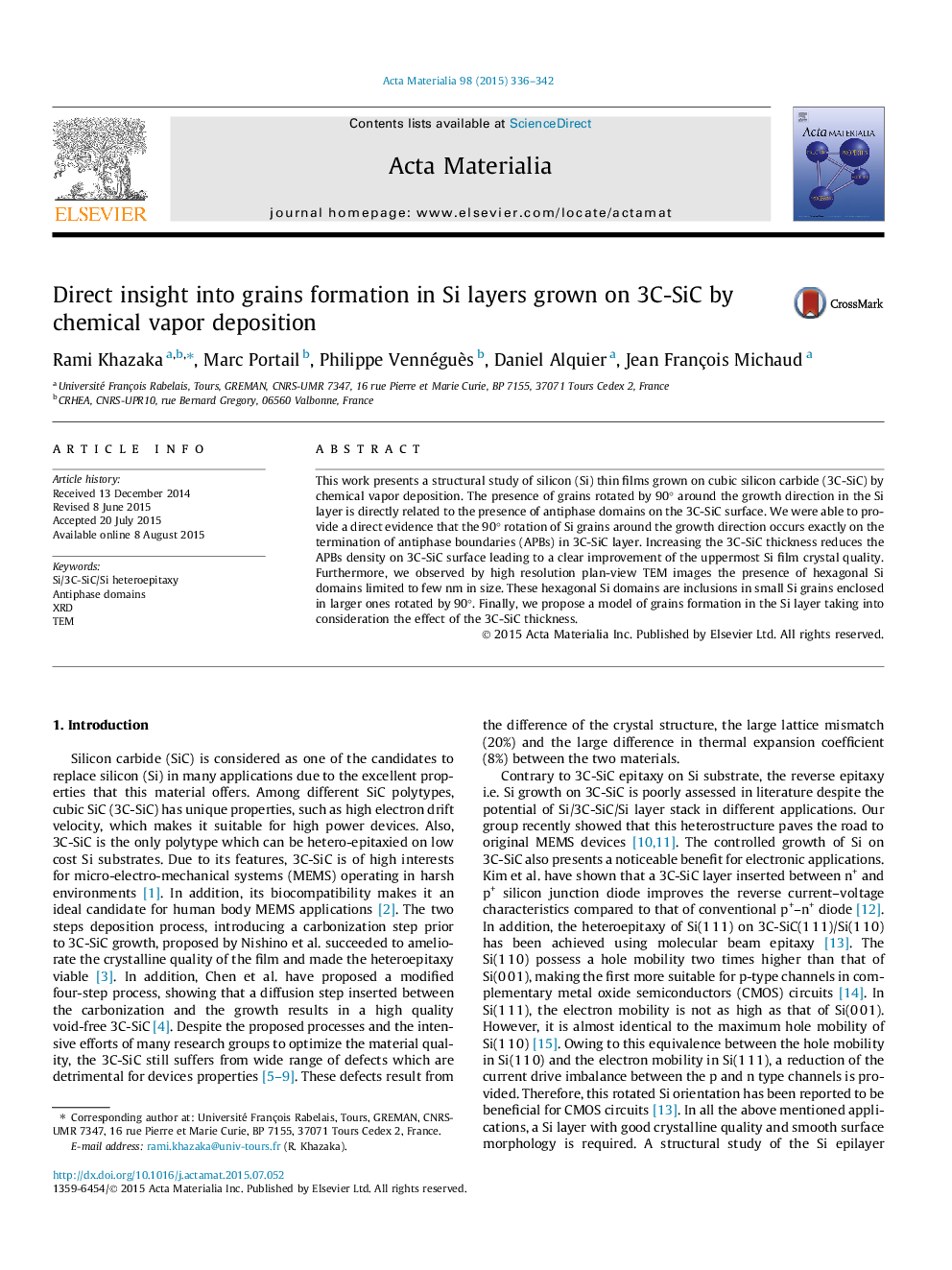| Article ID | Journal | Published Year | Pages | File Type |
|---|---|---|---|---|
| 1445283 | Acta Materialia | 2015 | 7 Pages |
This work presents a structural study of silicon (Si) thin films grown on cubic silicon carbide (3C-SiC) by chemical vapor deposition. The presence of grains rotated by 90° around the growth direction in the Si layer is directly related to the presence of antiphase domains on the 3C-SiC surface. We were able to provide a direct evidence that the 90° rotation of Si grains around the growth direction occurs exactly on the termination of antiphase boundaries (APBs) in 3C-SiC layer. Increasing the 3C-SiC thickness reduces the APBs density on 3C-SiC surface leading to a clear improvement of the uppermost Si film crystal quality. Furthermore, we observed by high resolution plan-view TEM images the presence of hexagonal Si domains limited to few nm in size. These hexagonal Si domains are inclusions in small Si grains enclosed in larger ones rotated by 90°. Finally, we propose a model of grains formation in the Si layer taking into consideration the effect of the 3C-SiC thickness.
Graphical abstractIn this contribution, we demonstrated the influence of the 3C-SiC layer on the subsequent growth of Si epilayers. We were able to give a direct evidence that the rotation in the Si epilayer of 90° around the growth direction occurs exactly on the termination of an antiphase boundary in the 3C-SiC layer as shown in the figure above. Thus, increasing the layer thickness of the 3C-SiC leads to a direct improvement of the crystalline quality of the subsequent Si epilayer.(a) Cross-section bright-field TEM image of the Si/3C-SiC layer stack along two 3C-SiC zone axes [1 −1 0] and [1 1 0] (equivalent to [1 −1 1] and [1 1 2] in Si, respectively), (b) dark field image selecting a (2 0 −2) electron diffraction spot indicated by the black circle in the SAED shown as inset, (c) dark field image selecting a (−1 1 −1) electron diffraction spot indicated by the black circle in the SAED shown as inset. The dotted white line in the images show the position of the defect in the 3C-SiC layer.Figure optionsDownload full-size imageDownload high-quality image (87 K)Download as PowerPoint slide
